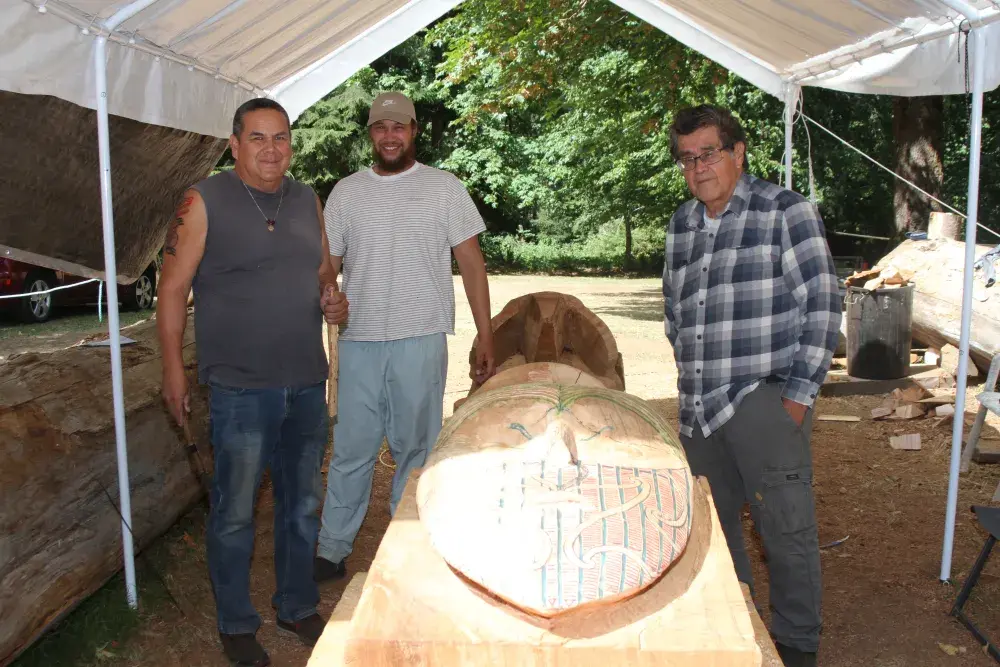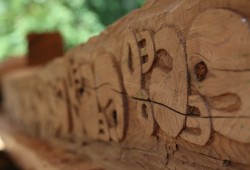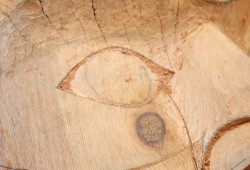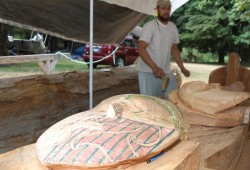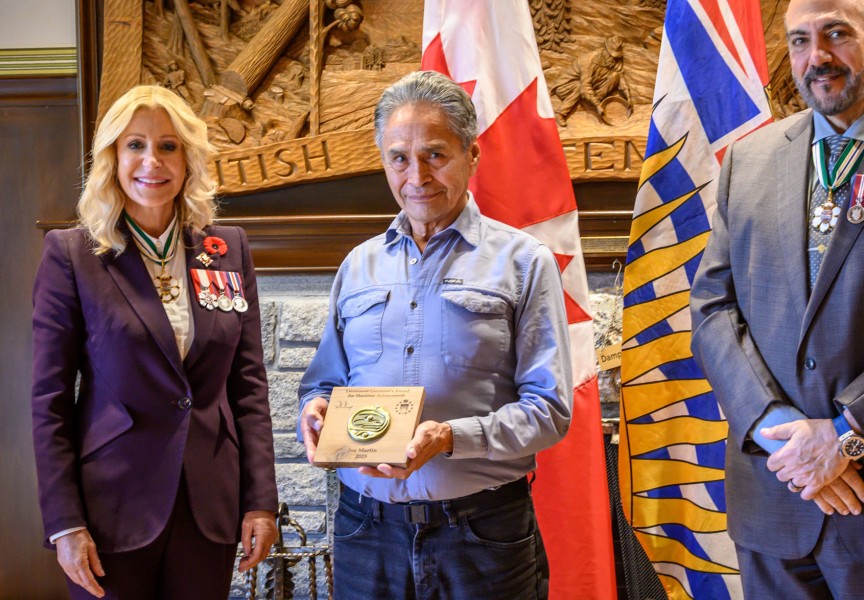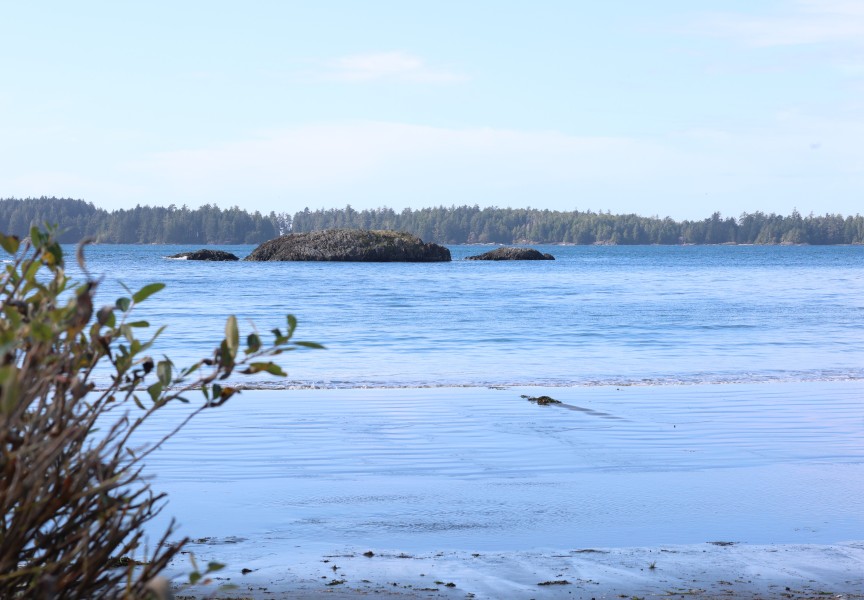This summer a totem pole is coming to life, commemorating the blood ties that began hundreds of years ago when a Māori canoe was blown across the Pacific to Vancouver Island’s shore.
Hundreds of years after this chance encounter in Ehattesaht territory, Māori visitors came to Vancouver Island this June, a group that included at least one descendent of the three men who spent three years with a Nuu-chah-nulth tribe long ago. After his relatives went back home to New Zealand, Alan Heta stayed behind to make a totem pole with Hesquiaht carver Tim Paul in Port Alberni.
“It’s sort of like a reunion,” said Heta, looking over the faces taking shape from the cedar.
The pole incorporates elements of Nuu-chah-nulth and Māori culture, a first for Tim Paul, who has carved for nearly 50 years. Working with a Māori artist has brought a different energy to his process.
“He knows all his designs,” said Paul of the young man, whose family encouraged him to learn from the master carver. “They wanted him to stay here to work with me with the tools that I have.”
“Just the way he works is a lot different from how we do things at home,” said Heta, who comes from Ngāpuhi on the northern end of New Zealand’s North Island.
Down under wood is much harder than cedar, requiring more chiseling in the carving process. Heta brought a piece of yew that feels as hard as marble.
“We don’t use knives, we use chisels,” he said. “The wood’s a lot harder at home, so you can’t cut.”
The collaboration continues a relationship that began over 15 generations ago, a remarkable story of three Māori men who appeared to be blown far off course, causing their canoe to wash up on the northern shore of Esperanza Inlet. They landed in the village of t̓iławis, also known as Yellow Bluff, where they remained for three years. The host tribe built them two new dugout canoes, and equipped with sails the Māori headed back across the Pacific Ocean, accompanied with Nuu-chah-nulth wives.
“One brother stayed back,” said Heta, opening up the possibility that a Māori man became a permanent member of the tribe at t̓iławis.
Over the years Ernie Smith of Ehattesaht heard this story from his relatives. A few years ago he and cousin Dawn Smith got their DNA analysed, and found traces of Māori and Hawaiian ancestors. Further investigation linked them to Manu Reti, a Māori woman listed as the possible fourth cousin of Ernie Smith.
Paul, who is related to Ernie Smith, was also aware of the story of the three Māori men. Back in 1990 he travelled to New Zealand to present a totem pole he made with Kevin Cramner, where the carver discovered similar accounts from those on the other side of the Pacific, stories told through the generations indicating that the Māori men made it back home.
In recent years Lily George, daughter of the late Manu Reti, confirmed this story by tests she undertook through Ancestry DNA. In June George and other Māori people ventured across the ocean to Vancouver Island to connect with their distant relatives and see Yellow Bluff, where their ancestors spent three years long ago.
“It reminded me of the South Island of New Zealand,” said Heta of the old village site in Esperanza Inlet. “We were up until 2 in the morning taking photos. I’ve got photos of the moon, it was like a sun in the nighttime.”
During his previous years of working at the Royal B.C. Museum Paul would share the story of cross-Pacific travel, where he was met with skepticism that a pre-industrial canoe could make the 11,000-kilometre journey. But Polynesian tribes have a long history of migration amidst the Pacific islands, including the 3,000-kilometre journey from Hawaiki that brought Māori settlement to New Zealand in the 14th century.
Haki Tuaupiki at New Zealand’s University of Waikoto has studied the voyages of his Māori and Polynesian ancestors, researching their epic sea journeys in large, double-hulled waka, or canoes. He found that the Māori considered a range of environmental factors in navigation, including the sun, stars, wind and cloud movement, ocean currents, bird and whale migration as well as seasonal patterns when choosing to travel long distances.
“When the Spanish [navigators] and Vikings were hugging the shores, centuries before that Polynesians were crossing the Pacific Ocean,” said Tuaupiki in an article published by the university. “What really blows me away is that our ancestors had an intimate understanding of their environment, and when to make long-distance voyages. They understood the weather, climate and seasons.”
Deep historical ties to the ocean have come across both in Māori and Nuu-chah-nulth culture through depictions of the Sea Serpent. Designs from both cultures line one side of the totem Paul and Heta are working on, with assistance from Alton Watts of Hupacasath at his property in Port Alberni. At the top of the pole sits the first woman, under whom is a depiction of the raven taking on the form of the first man.
The woman is at the top due to the traditional importance of female elders within Nuu-chah-nulth communities, explained Paul.
“That rank and file in the whole house, it’s the ladies’ job to get a real strong consensus,” he said. “They’re the legal advisors, all the ladies back there, all the aunts, all the grandmothers.”
At the bottom of the pole a depiction of the first Māori man is taking shape, which Heta has given elaborate facial patterns reminiscent of tribal tattoos.
“The design was for our chiefs at home and their significance,” he said.
The carvers hope to finish the pole by late August, and plan to have it raised in early November when the Māori relatives return to see a cultural centre Paul is overseeing the construction of on River Road in Port Alberni. At the age of 74, this is part of the master carver’s critical transferring of cultural teachings to younger generations.
“It’s urgent to get it done today,” said Paul, who is working on the pole with Heta and Watts without any grant funding. “It’s a gift from my family, a gift from Hesquiaht.”
He hopes this work instills a sense of hope for future generations, beyond the pain his people have endured in the past.
“I really feel bad for some of my relatives I went to residential school with, because I know that they can’t let go. I know that they’ve been hurt and abused so badly that it will never leave their innards,” reflected Paul. “I want my young nieces and nephews and grandchildren hear me say we’ve got cause to celebrate every day simply because we survived.”

